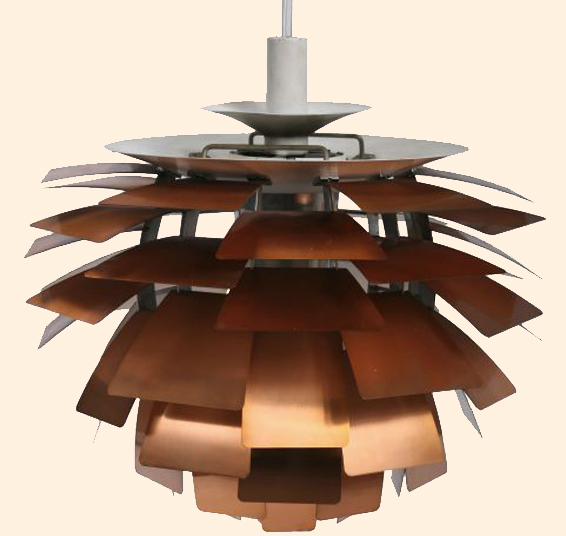
有50年历史的丹麦鞋企爱步(Ecco)几年前转变了营销战略,借着近年一切带有北欧风格的事物大热的形势,着重强调爱步品牌的斯堪的纳维亚设计资质,而不再把重点放在鞋本身舒适、耐穿这些品质上。
爱步负责品牌管理事务的副总裁马吉特•戈绍(Margit Gosau)在该公司位于布雷泽布罗(Bredebro)的总部表示:"以前我们在美国拍宣传片时,会强调这个品牌的各个不同方面。"布雷泽布罗在丹麦与德国边境附近。
"但后来我们采取了重拳,着力突出我们在斯堪的纳维亚设计传统中的地位,这帮助改变了我们的产品形象,不再仅仅是实用的鞋子,而是具有了更为深奥、极简和时尚的特色。"
结果令人注目。过去一年里,爱步税前利润增长逾40%,至9亿丹麦克朗(合1.51亿美元)。亚洲和美国市场上的增长尤其强劲,这两个市场占了总销售额的一半以上。
哥本哈根丹麦设计学院(Danish School of Design)院长特别顾问蒂内•舍尔森(Tine Kjølsen)表示:"世界各地的人们对斯堪的纳维亚风格的兴趣超过近年来任何时候。"他指出,大量北欧品牌取得了成功,如时尚的瑞典时装品牌Acne、背包生产商Sandqvist。
一些声名最显赫、享誉国际的设计师来自斯堪的纳维亚——丹麦、瑞典和挪威,不过整个大北欧区(除上述三国外还包括芬兰、冰岛和格陵兰岛)都受益于名气上升,其中芬兰更是设计大师倍出。
舍尔森表示:"这部分要归功于斯蒂格•拉森(Stieg Larsson)的千禧年三部曲等书籍,以及《谋杀》、《Borgen》之类的电视剧,它们引起了人们对该地区文化的关注。"
"不过这也是由于人们对北欧的生活方式再次产生了兴趣。"这一些,加上北欧国家的经济富有活力——在金融危机期间,北欧的经济比多数欧洲国家都好得多——人们不由生出这样的想法:"斯堪的纳维亚半岛就好比一个乌托邦,快乐、富足、靓丽的人们经常在阳光底下骑着脚踏车。"
"挪威百分百"(100% Norway)年度设计展的管理人亨利埃塔•汤普森(Henrietta Thompson)指出,北欧风格有其独特内涵——简洁、明快、制作精良,这尤其能打动当今的消费者。
她说:"斯堪的纳维亚风格赖以闻名的所有因素,如谦逊、诚实和优良品质,同时又没有意大利某些风格中那种光芒四射、过分花哨的特点,这正吻合了我们所处的受紧缩左右的后危机时代。"
"人们对产品工艺、渊源出处再次产生了兴趣,这正符合了斯堪的纳维亚的传统。"
汤普森补充道,消费者对设计作为日常生活中一种重要元素的兴趣越来越浓厚,这对以设计为导向的公司有利,尤其是对本地区的风格兴趣浓厚,而斯堪的纳维亚风格总是聚焦于普通人和他们的家。
世界最大家具制造商宜家(Ikea)的存亡与其设计资质息息相关。但其他企业如电梯制造商通力集团(Kone)和玩具制造商乐高(Lego)也表示,设计对于它们在全球的吸引力举足轻重。沃尔沃(Volvo)今年发布了新版V40轿车,而数场围绕斯堪的纳维亚风格的研讨会也差不多在同一时间举办。
各家企业本身以及各种资金充沛的机构都投入资金,在海外宣传斯堪的纳维亚风格。
设计商店Scandium的创始人芒努斯•恩隆德(Magnus Englund)写过一本书,名为《现代斯堪的纳维亚》(Scandinavian Modern)。让他意外的是,这本书在全世界卖出了10万册,主要归功于宜家的宣传——尽管这本书里没有提到任何宜家产品。"他们认为,宜家身为斯堪的纳维亚品牌,值得在这上面花时间。"
然而,企业界指出,在营销措施、文化潮流、一些电视剧的影响等等的背后,产品质量和发展战略才是基础所在。
爱步首席执行官、毕生从事鞋业的迪特尔•卡斯普拉克(Dieter Kasprzak)表示:"从鞋到水瓶,斯堪的纳维亚风格都显得简洁清新。这意味着,不管流行的文化或者个人品位如何,我们的产品能够赢得从香港到洛杉矶的所有人的喜爱。在哪里都会很配。"
宜家设计经理马库斯•恩曼(Marcus Engman)表示:"我们的产品不仅人们买得起、功能完善、外观时尚,而且可以百搭,这才使我们在全球取得了成功。你可以以斯堪的纳维亚风格搭配任何其他风格,都非常协调。"宜家全球年销售额已达到250亿欧元。
宜家和H&M等一些北欧企业之所以取得成功,除了不局限于当前的潮流以外,还有产品成本较低的原因。这一点的根源可以追溯到20世纪50年代的左翼政治思潮:企业应该以合理的价格提供优良的产品。
爱步表示,它还受益于强调其与自然的联系,这是斯堪的纳维亚风格的另一个重要主题,这要归功于该地区四季分明。
当被问及斯堪的纳维亚风格能否长久保有强大的吸引力时,舍尔森的话代表了该地区众多设计导向性的企业,她说:"我们站在巨人的肩膀上,现在我们自己也成长得很高大了。"
译者/倪卫国
http://www.ftchinese.com/story/001045340

Just a few years ago Ecco, a Danish shoemaker founded 50 years ago, switched its marketing strategy to tap into the latest surge for all things Nordic, by emphasising the brand's Scandinavian design credentials rather than the comfort and durability of its footwear.
"Before, we were doing shoots in America emphasising all different aspects of the brand," says Margit Gosau, vice-president of brand management, at Ecco's head office in Bredebro, near the border with Germany.
"But there has since been a big push to highlight our place in the Scandinavian design tradition, which has helped to frame our products as more than just sensible footwear, but something more profound, minimalist and trendy."
The results have been dramatic. In the past year pre-tax profits rose by more than 40 per cent to Dkr900m ($151m). Growth was particularly strong in Asia and the US markets, which make up more than half of all sales.
"People all around the world are more interested in Scandinavian design than at any time in recent memory," says Tine Kjølsen, special adviser to the rector of the Danish School of Design in Copenhagen, pointing to the success of a host of Nordic brands including Acne, the hip Swedish fashion label, and Sandqvist, the backpack maker.
Some of the best-known designers with international reputations come from Scandinavia – Denmark, Sweden and Norway – but the wider Nordic region, which also includes Finland, Iceland and Greenland – has benefited from the raised profile, with Finland in particular producing giants of design-led style.
"It's partly because of books such as Stieg Larsson's Millennium trilogy and TV shows like The Killing and Borgen, which have thrown a cultural spotlight on the region," Ms Kjølsen says.
"But it is also due to a renewed interest in the Nordic lifestyle" Along with the robust economies in the Nordic countries, which have fared better during the financial crisis than most of Europe, a view has emerged that "Scandinavia is a kind of utopian region filled with happy, rich and beautiful people constantly cycling in the sunshine".
Henrietta Thompson, curator of an annual design exhibition "100% Norway", argues that there is also something intrinsic to the design style – simple, clean-looking and well-made products – that particularly resonates with consumers today.
"All those things that Scandinavian design is known for like humbleness, honesty and good quality – without being too shiny and loud like some Italian styles – very much fits in with the austerity-driven post-crisis age we live in," she says.
"There is also a renewed interest in craft and where things come from, which chimes with the Scandinavian tradition."
Ms Thompson adds that increasingly consumers interest in design as an important element of everyday life, has helped all design-led companies, but particularly in those in this region where style has always focused on ordinary people and their homes.
Ikea, the world's biggest furniture maker, lives or dies by its design credentials. But other companies such as Kone, the Finnish liftmaker, or Lego, the toymaker also say design is crucial to their global appeal. The launch of Volvo's new V40 car this year is being accompanied by seminars on Scandinavian design.
The companies themselves, as well as various well-funded bodies, invest in promoting Scandinavian ideas abroad.
Magnus Englund, founder of design shop Scandium, wrote a book called Scandinavian Modern. To his surprise, 100,000 copies have been sold globally, mostly because Ikea promoted it – even though he had featured none of its products: "They thought it did enough for the Scandinavian design brand to be worth their while."
Underlying the marketing efforts, cultural trends or effects of a few television shows, however, the companies point to the quality of their products and development strategies.
"From shoes to water bottles, Scandinavian design is clean and fresh- looking," says Dieter Kasprzak, chief executive of Ecco and life-long shoemaker. "This means everyone from Hong Kong to Los Angeles can appreciate it, no matter what the pervading culture or taste. It can fit in everywhere."
Marcus Engman, design manager at Ikea, where global sales have reached €25bn, says: "Our international success is only possible because our products are not just affordable, functional and stylish but blendable. You can blend Scandinavian design into any other style and it will fit."
Another reason for the success of some Nordic companies such as Ikea and H&M – looking beyond what is fashionable at the moment – is the low cost of the products. The root of this dates back to the 1950s leftwing political ideal that companies should be providing beautiful goods for all at a reasonable price.
Ecco says it has also benefited from emphasising its link with nature, which is another prominent theme in Scandinavian design, owing to the region's vividly contrasting seasons.
Asked if the strong appeal of Scandinavian design can persist, Ms Kjølsen speaks for many of the region's design-led companies when she says: "We are standing on the shoulders of giants, and growing pretty tall ourselves these days."
没有评论:
发表评论